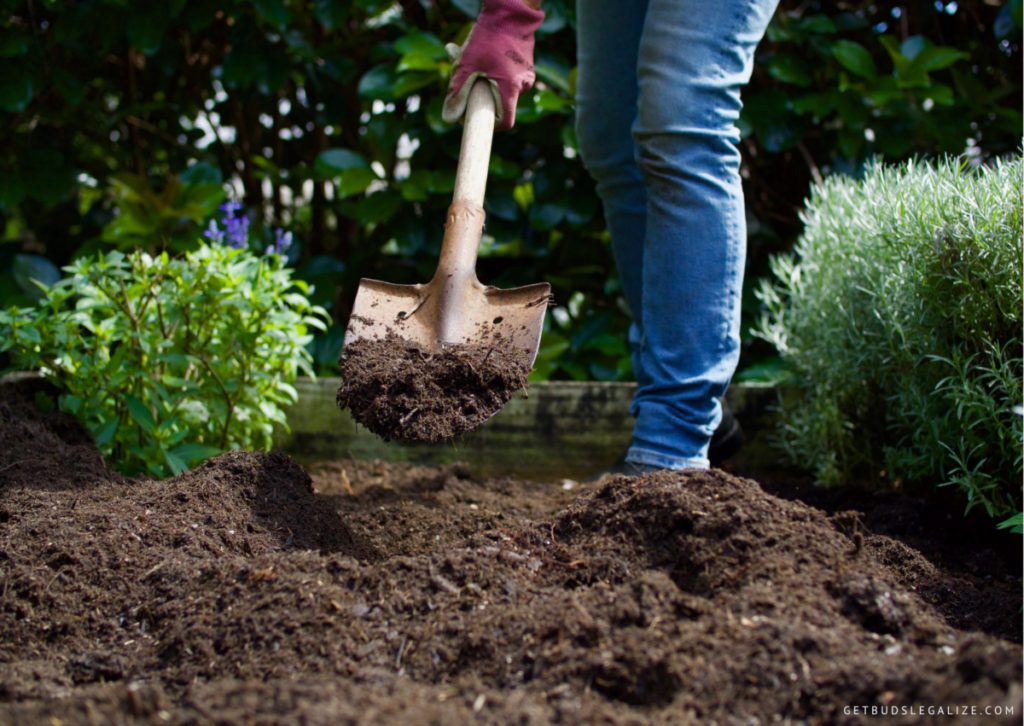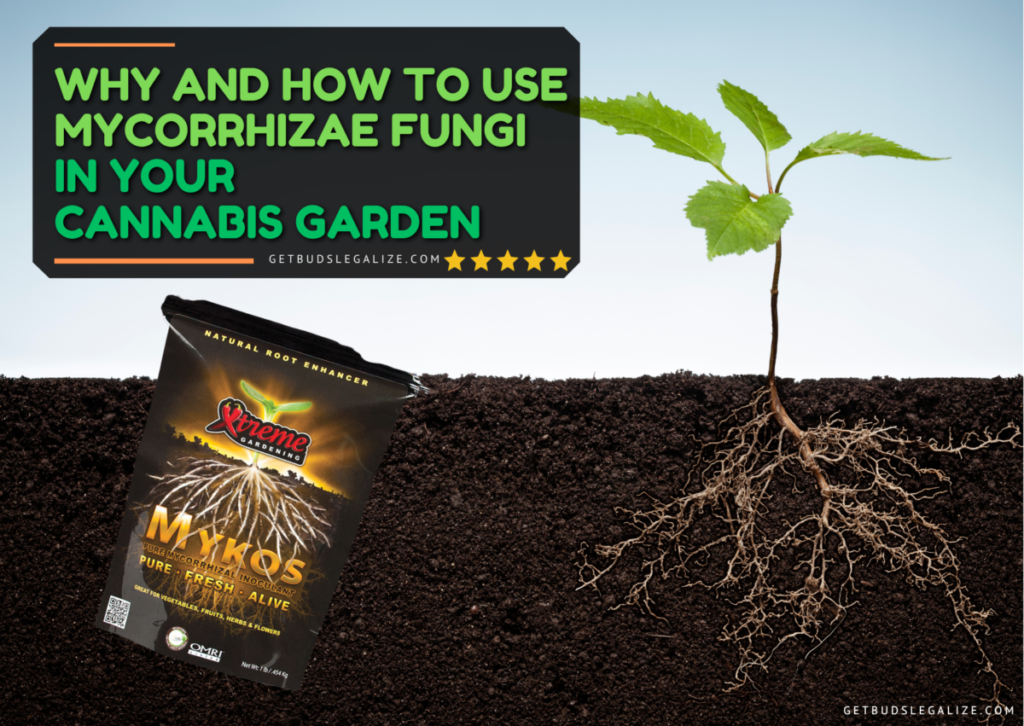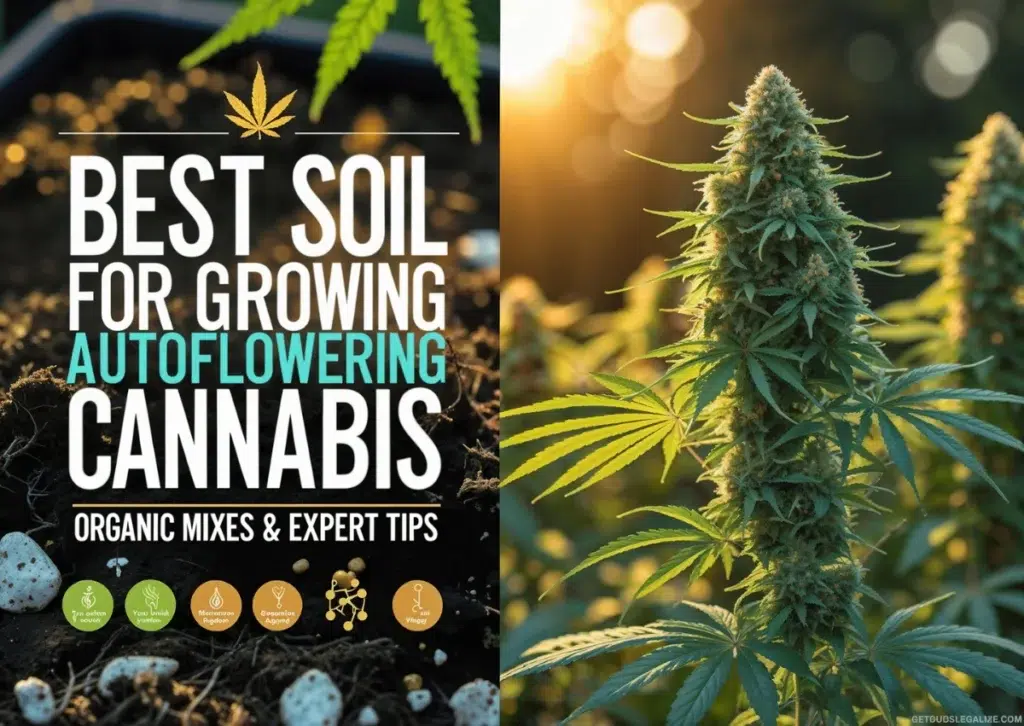Why and How to Use Mycorrhizae Fungi in Your Cannabis Garden
If you are a cannabis grower, you may have heard of the benefits of using mycorrhizae fungi in your soil. But what are these fungi and how do they help your plants?
In this blog post, we will explain what they are, how they work, and how to use mycorrhizae in your cannabis garden correctly to achieve a perfect result.
What are Mycorrhizae?
Mycorrhizae are a type of fungi that form a symbiotic relationship with the plant roots. The word mycorrhiza comes from the Greek words for fungus (myco) and root (rhiza). Mycorrhizae fungi attach themselves to the roots of plants and extend their hyphae (thin filaments) into the soil. These hyphae act like an extension of the plant’s root system, increasing its surface area and reach.
Mycorrhizae fungi help plants in several ways. They help plants absorb more water and nutrients from the soil, especially phosphorus, nitrogen, and micronutrients. They also protect plants from pathogens, pests, drought, and salinity by enhancing the root’s cell walls and producing antibiotics. They also improve soil structure and fertility by decomposing organic matter and releasing enzymes.
There are different types of mycorrhizae fungi, but the most common and beneficial for cannabis plants are called arbuscular mycorrhizae (AM). These fungi penetrate the root cells of plants and form arbuscules (tree-like structures) inside them.
What Are the Benefits of Using Mycorrhizae Fungi?

Using mycorrhizal in your cannabis garden can have many advantages for your plants and your yield. Some of the main benefits are:
- Promote larger plant growth and healthier, deeper dark green foliage: They increase the surface area of the roots and allow them to access more soil resources. Plants with mycorrhizal associations can grow faster and stronger than those without.
- Lead to greater flower and fruit production (more and/or larger): They enhance the uptake of phosphorus, which is essential for flowering and fruiting. They also improve the quality and flavor of fruits and vegetables by increasing the levels of sugars, vitamins, antioxidants, and other compounds.
- Enhance resilience to stress, heat, and other environmental changes: They help plants cope with drought, salinity, heavy metals, temperature extremes, and other adverse conditions. They also increase plant disease resistance by promoting overall improved plant health. Also, when the roots are colonized or coated with mycorrhizal, it limits access to the roots by other harmful pests, fungi, or diseases. For example, studies show that colonized roots have added protection against root-chewing pests and insects!
- Improve water uptake, leading to increased drought resistance and less water demand for the plant: They reduce water loss from the roots and enhance water storage in the soil. Plants with mycorrhizal associations can survive longer periods of water stress and require less irrigation than those without.
- Lessen the risk of transplant shock, such as when planting new trees or moving indoor-raised seedlings outside: They help plants establish quickly and securely in new locations by improving root growth and soil structure. They also reduce root damage during transplanting and improve root recovery after transplanting.
- Reduce the need for fertilizer inputs (and associated costs): They make plants more efficient in using nutrients from the soil and organic matter. They also reduce nutrient leaching and runoff by retaining nutrients in the root zone. Plants with mycorrhizal associations can thrive with less fertilizer than those without.
- Decrease the accumulation and residual levels of toxic contaminants in crops, such as persistent organic pollutants (POPs), which plants typically readily absorb in their roots and tissues. They help plants detoxify and degrade these pollutants by increasing their metabolism and enzyme activity. They also prevent these pollutants from entering the food chain by sequestering them in fungal tissues or immobilizing them in the soil.
- Naturally improve soil structure, and fertility, and promote a healthy living soil food web: They create aggregates that improve soil aeration, drainage, and water retention. They also stimulate the activity and diversity of other beneficial soil organisms, such as bacteria, earthworms, and insects. They contribute to soil organic matter formation and decomposition by breaking down plant residues and releasing nutrients.
What To Know When Using Mycorrhizae Fungi

Mycorrhizae fungi are beneficial microorganisms that form symbiotic associations with the roots of most plants. They help the plants absorb nutrients and water from the soil, enhance their resistance to stress and pathogens, and improve soil structure and fertility.
However, not all mycorrhizae fungi are equally effective for all plants and conditions. Therefore, it is important to know some basic facts when using mycorrhizal fungi in your cannabis garden or farm.
1. You Need to Identify the Type of Mycorrhiza that Your Plant Form:
Cannabis plants form arbuscular mycorrhiza (AM), which means that the fungi penetrate the root cells and form branched structures called arbuscules. AM fungi belong to the phylum Glomeromycota and include species such as Glomus intraradices, Glomus mosseae, and Gigaspora margarita. These are the most effective mycorrhizal spore for cannabis cultivation.
2. You Need to Choose the Right Mycorrhizal Inoculum for Your Plants:
A mycorrhizal inoculum is a product that contains living mycorrhizal spores, hyphae, or root fragments that can colonize your cannabis roots. You can buy mycorrhizal inocula online or at a local nursery. Make sure to choose a product that is compatible with your cannabis strain, soil type, and growing conditions. You can also check the label for the concentration and diversity of mycorrhizae fungi in the product.
3. You Need to Apply the Mycorrhizal Inoculum Properly to Ensure Optimal Colonization and Performance:
The best time to apply the mycorrhizal inoculum is at the planting stage when you transplant your cannabis seedlings or clones into their final pots or beds. You can sprinkle the inoculum directly on the roots or mix it with the growing medium. You can also apply it as a drench or a foliar spray during the vegetative or flowering stages.
The amount and frequency of application depend on the product instructions and your cannabis needs. Generally, you want to apply enough inoculum to cover the root zone of your plants and repeat every few weeks or months.
Mycorrhizae fungi can be a powerful ally for your plants, but they require some knowledge and care to use them effectively.
Best Mycorrhizae for Cannabis: Top Picks for Healthier Plants
When selecting mycorrhizal fungi for your cannabis garden, it’s essential to choose high-quality products that contain beneficial strains like Glomus intraradices and Glomus mosseae. These strains form symbiotic relationships with cannabis roots, improving nutrient absorption, stress resistance, and overall plant health.
Top Mycorrhizae Products for Cannabis Cultivation
How to Apply Mycorrhizae Fungi Correctly

Mycorrhizal can be applied to plants in various ways, depending on the type of product and the stage of plant growth. Here are some guidelines on how to use mycorrhizal fungi in your garden or farm.
Mycorrhizae Powder:
Mycorrhizal powder is a dry product that contains spores and hyphae of mycorrhizal fungi. It can be mixed with water or applied directly to the soil or plant roots.
• Transplants/New Plantings: When transplanting or planting new seedlings, dip the roots in a solution of mycorrhizal powder and water. Use 1 teaspoon of powder per gallon of water and soak the roots for 15 minutes before planting. Alternatively, you can sprinkle some powder in the planting hole or around the root ball before covering it with soil.
• Soil Amendment: To improve the soil quality and inoculate a large area with mycorrhizal fungi, you can broadcast the powder over the soil surface and lightly rake it in. Use 1 to 2 pounds of powder per 1000 square feet of soil. You can also mix the powder with compost or organic fertilizer and apply it to the soil.
• Established Plants: To boost the performance of established plants, you can apply mycorrhizal powder to the root zone. Use a drill or auger to make holes around the drip line of the plant, about 6 inches deep and 12 inches apart. Fill the holes with a mixture of powder and water, using 1 teaspoon of powder per gallon of water. Water the plant thoroughly after application.
Mycorrhizae Soluble:
Soluble mycorrhizae are liquid products that contain soluble spores and extracts of mycorrhizal fungi. They can be applied as a foliar spray or a soil drench.
• Seeds: To enhance seed germination and seedling growth, you can soak the seeds in a solution of soluble mycorrhizae and water. Use 1 ounce of product per gallon of water and soak the seeds for 24 hours before planting.
• Transplants/New Plantings: When transplanting or planting new seedlings, you can water them with a solution of soluble mycorrhizae and water. Use 1 ounce of product per gallon of water and water the plants thoroughly after planting.
• Hydroponic: To introduce mycorrhizal fungi to hydroponic systems, you can add soluble mycorrhizae to the nutrient solution. Use 1 ounce of product per 10 gallons of solution and change the solution every two weeks.
• Established Plantings: To improve the health and yield of established plants, you can spray or drench them with a solution of soluble mycorrhizae and water. Use 1 ounce of product per gallon of water and apply every two weeks during the growing season.
Mycorrhizae and Beneficial Bacteria Work Together for the Success of Your Marijuana Grow
Mycorrhiza fungi are a natural and organic way to enhance your marijuana growth. They are easy to use, environmentally safe, and beneficial for your plants. By using mycorrhiza fungi in your garden, you can enjoy a more satisfying and rewarding growing experience.
How to Use Mycorrhizae Fungi - FAQs
Adding mycorrhizal after planting can improve plant growth and health, but it is important to follow some guidelines. First, choose a mycorrhizal product that matches the type of plants you have. Second, apply the product according to the instructions on the label, either by mixing it with the soil or watering it. Third, avoid using fungicides or high doses of phosphorus fertilizers, as they can harm the fungi.
Adding mycorrhizae during the flowering may not be advisable, as it can disrupt the delicate balance of hormones and nutrients that the plant needs to produce buds. It is better to inoculate the plants with mycorrhizae at the seedling or vegetative stage and avoid adding any more during flowering.
Mycorrhizae can improve plant growth, yield, and quality, especially in poor or degraded soils. Therefore, mycorrhizae are worth it for many gardeners and farmers who want to enhance their crops and soil health.
To add mycorrhizae to the soil naturally, you can use organic mulches, composts, or inoculants that contain spores or fragments of mycorrhizal. These will colonize the roots of your plants and improve their growth and health.
The amount of mycorrhizal fungi to use depends on several factors, such as the type and size of plants, the soil condition, and the desired results. Generally speaking, more is better than less when it comes to applying mycorrhizal fungi. However, you should always follow the manufacturer’s instructions and recommendations for optimal results.
You can find mycorrhizae for sale from various online sources, such as Amazon, eBay, or specialized gardening websites. Alternatively, you can visit your local nursery or garden center and ask for mycorrhizal products.
To use mycorrhizae fungi on outdoor plants, you can either apply a commercial inoculant product or transfer some healthy soil from another area of your garden. The inoculant product can be granular or soluble and should be applied to the root zone of the plants according to the instructions.
The healthy soil should contain visible filaments of mycorrhizae fungi and should be spread over the planting site. Mycorrhizae fungi will colonize the plant roots and improve their growth and health.
To treat seeds with mycorrhizal inoculant, follow these steps:
- Choose an inoculant that is compatible with your crop and soil type. You can find this information on the product label or website.
- Mix the inoculant with water according to the instructions. The amount of water and inoculant will depend on the size and type of seed you are using.
- Coat the seed with the inoculant solution using a spray bottle, a seed treater, or a bucket. Make sure the seed is evenly covered and moist, but not dripping wet.
- Plant the seed as soon as possible. Avoid exposing the seed to direct sunlight, high temperatures, or dry conditions, as these can reduce the viability of the fungi.
- Monitor the growth and health of your plants. You should see improved germination, root development, and yield compared to untreated seed.
Mycorrhiza granules are a type of soil amendment that can enhance the growth and health of plants. They contain beneficial fungi that form a relationship with the roots of the plants, helping them absorb more water and nutrients from the soil. To use mycorrhiza granules, follow these steps:
- Choose a suitable product for your plants and soil type. Different types of mycorrhiza fungi have different preferences and benefits.
- Apply the granules to the soil before planting or transplanting. You can mix them with the potting mix, sprinkle them on the planting hole, or incorporate them into the topsoil.
- Water the plants well after applying the granules. This will help activate the fungi and establish the root-fungus connection.
- Avoid using chemical fertilizers or fungicides that can harm the mycorrhiza fungi. Instead, use organic or slow-release fertilizers and natural pest control methods.
- Enjoy the benefits of mycorrhiza granules, such as improved plant growth, drought tolerance, disease resistance, and nutrient uptake.
To apply mycorrhizae to established plants, you can use a granular or a soluble product. The goal is to make direct contact with the roots, so you need to cultivate and blend the product into the soil around the drip line of the plant. Water well after applying and cover with mulch if possible. Mycorrhizae cannot survive when exposed to sunlight, so avoid leaving them on the surface.























